Grown Up
A few days after the execution of Savonarola, the young Niccolò Machiavelli was elected secretary of the Second Chancery of Florence, a position that meant he could coordinate the state’s relations with other cities and towns that were under Florence’s rule. In a short period, he became the secretary to the Council of War.
As one of the Republic’s most active diplomats, he started visiting the courts of all European and Italian leaders. When Piero Soderini became head of the government in 1502 he convinced the new head of the government to create a native Florentine militia instead of a mercenary army, against the wishes of the aristocracy. In 1509 he would be vindicated with the conquest of Pisa.
The changing tides of Italian politics were so fast, that even a master of the game, a man who would be considered the founder of modern political science would be soon left behind. When Pope Borgia died in 1503, the deck had to be reshuffled. The new Pope Julius II (from 1503 to 1513) formed a new Holy League to tackle the mighty Venetian Republic in 1508 and everybody wanted a piece of the pie.
The Spanish King, the French King, the Holy Roman Empire, the list included almost every significant power in Western Europe. After two years Pope Julius II and French King Louis XII broke their alliance and turned on each other. Florence stuck with France, with Machiavelli advising against a war. With a little shove from the Medici who wanted back in, the Florentine native army faced a superior and more experienced Spanish army in Prato and lost (1512).



Soderini fled to Siena, the Medici were reinstated and Machiavelli was dismissed, imprisoned, and, even tortured under an accusation of conspiracy against the new regime. In 1513, Giovanni di Lorenzo de Medici, the brother of Giuliano de’ Medici who ruled Florence, ascends to the papal throne as Leo X.
All political prisoners in Florence are offered amnesty in a general climate of celebration for the city. Machiavelli was released and after a fruitless effort to win the favor of the new rulers he retired and wrote his most famous work, “the Prince”, a cynic masterpiece of realpolitik that would make him immortal. He dedicated his work to the Medici family to demonstrate his support but he would never manage to get back into the highest echelons of power.



Two years after the death of Pope Leo X in 1521 another Medici, Giulio di Giuliano de’ Medici ascended to the papal throne as Clement VII, reinforcing the bond between the Papal states and Florence that were essentially ruled by the same family. At the time Italy had been turned into a stage of the military contest between the two great powers of Europe, the Holy Roman Empire and France.
The new pope did what every weak side does in these circumstances. He tried to side with whichever was more powerful. When the French conquered Milan in 1524 Clement VII sided with the French. When Francis I of France crashed at the Battle of Pavia in 1525 Clement VII was forced to sign an alliance with the Habsburg Emperor Charles V.
In reality, the Pope continued to favor the French so in 1526 he went on to the formation of the League of Cognac, an alliance that included France, Venice, the Sforza of Milan, the Papal army, and the Republic of Florence.



The two sides exchanged insults and a new round of warfare began. The imperial army under Charles III of Bourbon advanced on Rome in 1527, crashed the papal armies, and sacked the city. Pope Clement VII was imprisoned and the Florentines found their chance to drive out the Medici and restore the republic.
At the time the republican party in Florence was still under the influence of Savonarola’s preaching. Jesus Christ was declared King of Florence and religious puritanism found its way back to the city. In July of 152,9, the French King capitulated leaving the Italian cities on their own.
By the end of summer,r the Republic of Florence had been left alone against the Imperial forces, led by Prince Philibert of Chalon. On October 14, 152,9, and after a series of battles, the Spanish and German troops of the emperor laid a siege on Florence.



A Florentine army under Francesco Ferrucci engaged the armies of the Emperor at the Battle of Gavinana in 1530, and, although the French Prince was killed, the Imperial army won a decisive victory and the Republic of Florence surrendered ten days later. Alessandro de Medici was then installed as Duke of Florence.
During the siege, on February 17, 1530, a historic match of Florentine football was played in mockery of the besiegers by 54 Florentine nobles to demonstrate the superiority of the city’s citizens over the besiegers. To this day, every June there is a tournament between teams from the four historic districts in memory of that match in one of the historic Piazzas of Florence.



Although Alessandro de’ Medici had agreed to a treaty that required him to respect the democratic institutions of Florence he soon began to give a more princely character to his government with the help of his cousin Pope Clemente VII who managed to convince the regent commission of Florence, to establish a new constitution which formally introduced a hereditary monarchy instead of a republic.
The Imperial troops stayed in Florence even after Alessandro assumed power in 1530, as safeguards. The moor, a nickname given to Alessandro by the Florentines due to his dark complexion, had spent most of his life in the imperial court of Charles V, a background he brought with him in his native city.
An extra guard of armed German mercenaries who protected him at all times, his move to change the traditional images of Florence’s fiorino with his image,e and his demand for the disarmament of all citizens, alienated him from his citizens who made an official but unsuccessful plea to the emperor for his deposition. His massive fortress the Fortezza da Basso would remind the Florentines of his authoritarian rule to this day.
At the beginning of 1537, Alessandro fell victim to his cousin and close friend Lorenzino de’ Medici who decided to act as the hand of all Florentine republicans and slay his relative for his city to be liberated by a man seen by most of them as a tyrant. With Alessandro’s death, the main branch of the Medici family was extinguished. Lorenzino fled to Venice and then France. When he returned to Venice he was murdered by two hired killers.



A young (17-year old) distant and unknown to most Florentines cousin of the murdered duke, from Mugello,o appeared in the city, followed by a few servants to assume power based on the claim of the hereditary monarchy. His name was Cosimo I de’ Medici. The Palleschi (a name given to the Medici partisans by the family’s coat-of-arms, bearing six balls (palle), made sure the newest member of the dynasty would get his chance to be a duke. The republicans fooled by the young of his age raised their hopes for a rule that would be mostly channeled through the city’s democratic institutions but they were soon proven wrong.
As soon as Cosimo I secured a decree that excluded the family branch of Lorenzino from any right of succession, he brushed aside all administrative bodies and assumed absolute authority. The republicans were furious. Many noble families were voluntarily exiled following the example of Filippo Strozzi and his family who had fled to Venice and then Rome during Alessandro’s term and were leading the anti-Medici faction. (According to some sources he was the instigator of Alessandro’s assassination a suspicion supported by the fact that Lorenzino fled to Palazzo Strozzi in Rome after his action).



In 1537 Filippo Strozzi summoned an army of exiles. After securing the support of the French royal family the army of exiles marched towards Florence at the end of July, under the leadership of Filippo and his son Piero and rallied around the Fortress of Montemurlo about thirty kilometers from the city, waiting for the right moment to attack Florence.
Cosimo managed to earn the consent of the city who saw the approaching army as invaders but most importantly earn the support of the Emperor. With the help of the experienced Imperial troops that were still stationed in Florence, the army of Cosimo reached Montemurlo on August 1. The battle was won and Filippo Strozzi was captured and imprisoned at the Fortezza da Basso in Florence, where he died after a few months. All leaders of the revolt were first imprisoned and then beheaded at the Bargello palace. Cosimo I was now the indisputable, absolute ruler of Florence.



As a sign of further support from Charles V, the Imperial troops started to withdraw from Florentine territories in 1542. Soon after Cosimo set out to prove he was more than a carrier of an important name. He built new forts in Arezzo, Sansepolcro, and Pistoia, he strengthened the defenses in Pisa, Volterra, and Castrocaro, he fortified San Piero a Sieve Empoli, Cortona, and MonteCarlo to the borders of the Republic of Lucca and purchased Elba Island from the Republic of Genoa. He based the new Florentine navy there.
He also founded the port city of Livorno in a pattern of an Ideal Renaissance town based on religious tolerance. The new ruler became a reformer of the civic landscape as well. Employing gifted artists like Bartolomeo Ammannati (Fountain of Neptune), Bernardo Buontalent (Boboli Gardens,) and Giorgio Vasari (The Uffizi Loggia) he managed to reshape the city’s face and shift the focus of social life, from inner courtyards and gardens to the piazzas, the civic gardens and the public spaces once more.
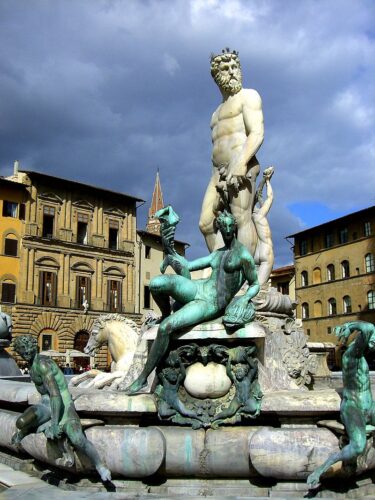


For centuries the Republic of Siena had been a thorn in the side of Florence. When things between the emperor and Siena heated up, Charles V decided to build a fortified citadel, manned with Imperial troops to control the city. The Sienese rose against the Empire and made a military pact with the French in 1552. After a failed invasion by the army of García de Toledo Osori, Viceroy of Sicily in 1553, Cosimo I offered to lead a new offensive against Siena.
When Cosimo prepared to attack, Piero Strozzi, head of the Florentine exiles like his father before him and sworn enemy of Cosimo I, volunteered to lead the army of French reinforcements in 1554. The first battle, the Battle of Chiusi was won by the Franco-Sienese army with the Spano-Florentines counting almost 3000 deadlines in one stroke.
That blow wasn’t enough for the Florentine army to succumb. In the main battle that followed the Battle of Marciano on August 2, 1554, the Sienese crashed suffering more than 4000 dead while 4000 more were captured. The Florentine side counted for not more than 400 dead. The road to Siena was wide open.


The news arrived in Florence accompanied by the sounds of bells. The Florentines rejoiced and Cosimo I announced three days of festivities, throwing coins into the crowd that waved Florentine flags, applauded, sang,g and chanted “Palle Palle, Duke Duke, Strozzi in a hole”. On April 17, 155, after many months of siege, the city of Siena surrendered.
Florentine and Spanish troops occupied the Sienese territory until in July 1557 Philip II of Spain granted Siena to Cosimo as a hereditary fiefdom. In 1559 the Republic of Siena was formally incorporated by the Duchy of Florence. Ten years later Cosimo would be elevated to the rank of Grand Duke by Pope Pius V after offering to put his fleet to the service of the Holy League that was being formed to fight the Ottomans.
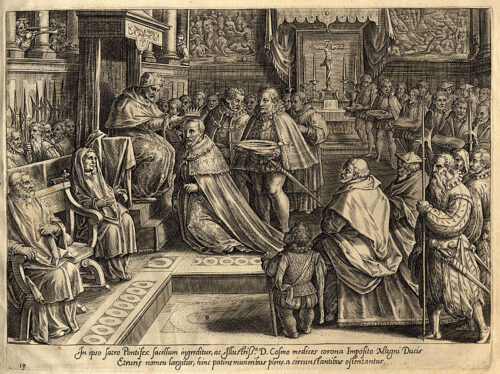

The Medici continued to balance successfully between the two major powers that had interests and armies in the Italian peninsula, which were France and Spain until the beginning of the 17th century. The precious independence of the Florentine state was preserved in exchange for large sums of money paid to the empire. At the same time,e however heavy taxation was imposed on Tuscan citizens for these large sums to be paid. The size of the Tuscan duchy was just too small to compete with the great centralized powers of the time.
As the new world of the Americas arose and intercontinental expeditions started to bring wealth to Spain, Portugal, England, and the Netherlands, the old dominant economies like Florence started to wane. Although the Tuscan fleet was strengthened and some expeditions targeting South America were carried out, the plans for a colony in Brasil didn’t come through. Commerce started to decline and the once dominant guilds were in reality left as reminders of the good old days.
Florence’s cultural tradition and her role as a Renaissance center were other stories. Underage Ferdinando II became Grand Duke in 1621. His mother Maria Maddalena of Austria and grandmother Christina of Lorraine acted as joint regents until he came of age. The three of them would act as patrons, allies, and close friends to one of the greatest scientists of all time, named Galileo Galilei. even when the Papal Church came after him with the accusation of heresy due to his scientific work.
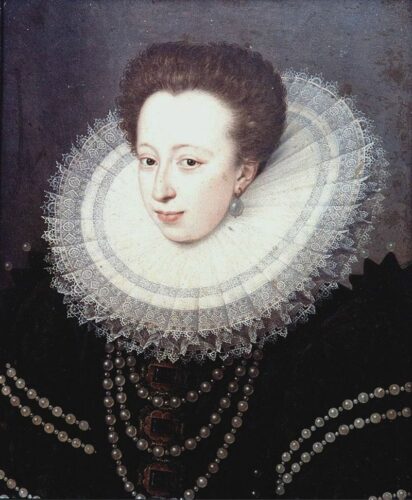



Galileo was born in Pisa, part of the Duchy of Tuscany, in 1564. Eight years later his family moved to Florence. He studied fine arts and in 1588 he obtained the position of instructor in the Accademia Delle Arti del Disegno. He continued teaching first in Pisa and then in Padua, mathematics, geometry, mechanics, and astronomy until 1610.
A true Renaissance man, Galileo was fascinated by astronomy and defended the heliocentric Copernican system since 1615. His published works, advocating the form of mathematical proof in science brought him into a conflict situation with the Jesuit professors. It was not long before Galileo’s writings on heliocentrism were submitted to the Roman Inquisition.


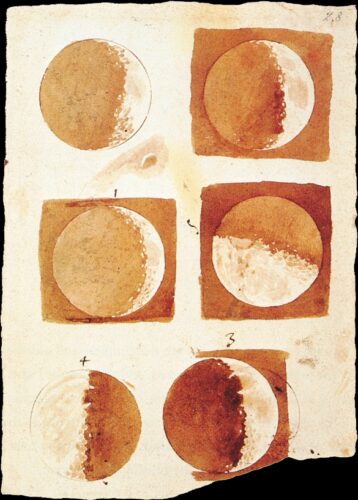
Galileo was ordered to abandon his opinions on heliocentrism and the scientist obeyed. For ten years he stayed away from the controversy. When Cardinal Maffeo Barberini, an f, friend, and admirer of Galileo became a Pope as Urban VIII in 1623 Galileo returned to the subject with the Dialogue Concerning the Two Chief World Systems which was published in 1632 and was dedicated to the Florentine Duke Ferdinand II.
The new book was again received as an advocate of Copernicus’s heliocentric system and the Roman inquisition summoned the Florentine astronomer for a second hearing. Ferdinand attempted to contain Rome’s concern for a full-fledged hearing to be avoided and kept Galileo in Florence until December 1635, when the Roman Inquisitors finally threatened to bring Galileo to Rome in chains if he would not come voluntarily. Ferdinand’s influence likely contributed to the lightness of Galileo’s penalty after the court’s conviction of the astronomer for vehement suspicion of heresy and soon after the trial was over, he welcomed Galileo back to Florence.


As a suspect of heresy, Galileo was sentenced to lifelong house arrest and spent the remainder of his life in his Villa at Arcetri near Florence. He continued to receive visitors, read and, write and is today perceived as the father of modern physics. He died in January 1642, aged 77. Although duke Ferdinandohonoredhonor him with a great monument in the Basilica of Santa Croce next to his father, the church protested. It wasn’t until 1737 that the monument was erected in his honor.



A year after Galileo’s death the duchy participated in the last-ever ever Medicean conflict, in the Wars of Castro against the forces of Pope Urban VIII. At the time the duchy’s treasury was so empty that the interest rate of the state bond had to be lowered by 0forr for it to be paid. Barter trade started to become the norm in rural markets while the treasury managed to cover nearly enough of the state’s current expenses.
The next Medici, Cosimo III, took over in 1670. Although his 53-year-long reign would be the longest in Tuscan history, his term would accelerate the demise of the duchy and condemn the city of Florence to a provincial role. It was also a period characterized by a series of puritan laws, targeting prostitutes and homosexuals while others put Tuscan citizens of Jewish descent in a state of quarantine with unbearable punishments or even tortures for the violators.
As the influence of the clergy grew stronger and the economy suffered, the population of the city and the duchy precipitated falling below 70.000 for the first and 720.000 for the latter. The Tuscan army numbered less than 3,000 men, many of whom were unfit to be soldiers. The navy fell in disrepair and the capital was overwhelmed by beggars.
At the same time, the state’s empty treasury had to pay the Holy Roman Empire with high feudal dues that were extracted from heavy customs and more tax constraints. The inauguration of six new theaters between 1648 and 1759 was a comfort pill that could not alleviate the increasing number of poor.


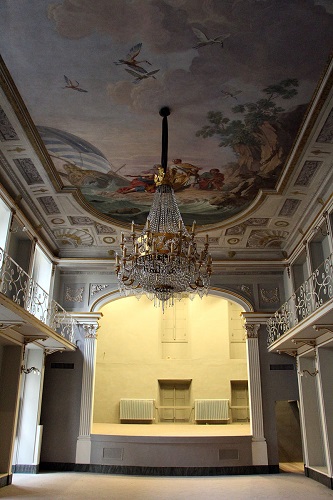
The last of the Medici to rule Tuscany (Gian Gastone 1723-1737) was not able to reverse the duchy’s descending spiral although he did abolish all anti-Semitic laws and did take back some of the taxes that had been imposed on lower incomes. After his death without a direct heir apparent and the official end of the 300-year-long Medici rule, the European dynasties decided to grant Tuscany to Francis Stephen, Duke of Lorraine (northeastern France).
Francis Stephen decided to renounce his title in France for that of Tuscany, a sacrifice he did not opt for, proven by the fact he rarely visited Florence during his reign. Francis Stephen was appointed Holy Roman Emperor as Francis I in 1745 and Tuscany became a fief of the Habsburg-Lorraine crown with Vienna as its capital.
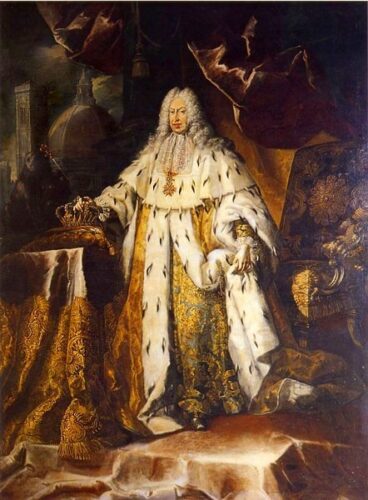

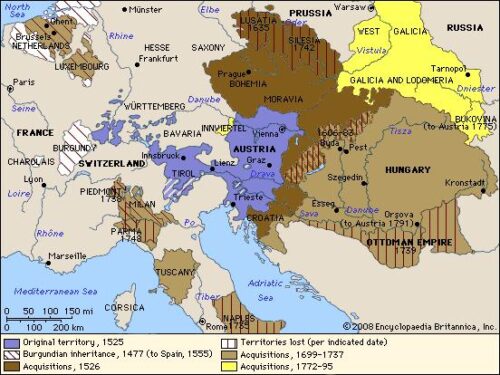
In the beginning, the Florentines faced their new rulers predisposed by the long and affectionate relationship with the Medici, with the same goodwill as their predecessors. When hundreds of works of art from the vast collection accumulated over centuries by the Florentine dukes, started to be transferred with long processions of ships from Florence to Vienna, that predisposition shifted to indignation.
When Peter Leopold of Lorraine ( 1765 – 1790 ) took the helms of the Grand Duchy things started to improve for the Florentine economy after a series of liberal reforms that reinvigorated commerce, modernized public administration, and the judicial system addressed many outdated practices of the health system and boosted agricultural production.


The population was on the rise again and new Neoclassical structures started to sprout in various corners of Florence. Two new bridges connected the two sides of the Arno, new districts expanded the city’s circumference, and the Museo di Storia Naturale di Firenze (1775) and the Galleria dell’Accademia (1784) were established.


The next ruler was Leopold’s son, Ferdinand III who was born in Florence in 1769 and took over in 1790. Two years later Europe was shaken by the French Revolution. Ferdinand was the first monarch to recognize the French Republic and the first to declare Tuscany’s neutrality in the War of the First Coalition.
In 1796 however, the French occupied the Florentine port city of Livorno, and soon after Napoleon entered Florence and occupied the duchy. Ferdinand was forced to flee Florence for Vienna in 1799.



The Grand Duchy was dissolved by the French and was replaced by the Kingdom of Etruria in 1801. The Kingdom was then ceded to the Bourbon Duke of Parma, Ferdinand as compensation for the loss of his territories in northern Italy. In May 1808, Etruria was formally annexed to France, and Napoleon Bonaparte’s sister, Elisa Bonaparte was appointed Grand Duchess of Tuscany.
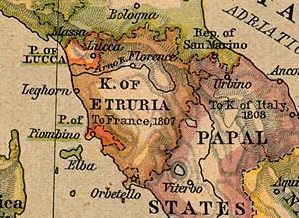


Napoleon’s world collapsed in 1814 and Ferdinand III returned to Florence. All Leopoldine laws were re-instated but many of the Napoleonic reforms were also maintained. Although the restored Lorraine rule was an example of moderation, the legislative environment was one of Europe’s most liberal frameworks, despite the series of public works like roads and aqueducts, despite the expansion of the port of Livorno, Italian nationalism had already started to sweep through major Italian cities and Florence was one of them.
In the Austro-Sardinian War that followed the Revolutions of 1848, Grand Duke Leopold II offered his support and troops to the Italian side. Despite his support, Leopold had to abandon Florence in February of 1849 to the Republicans who established their temporary government until 1852, when Leopold returned to Florence with the help of the Austrians.



The Austrian troops left in 1855 but four years later the Second Austro-Sardinian war broke out and hundreds of Florentines and Tuscan citizens joined the Sardinian forces. The aristocracy and the popular party demanded participation in the war on the side of the Italians but Leopold refused and declared neutrality.
New popular demands asked for Leopold’s abdication in favor of his son and a strong alliance with Victor Emmanuel II of Sardinia and Piedmont who led the struggle for Italian independence. Leopold II again refused and on April 27, 1859, a large crowd took to the streets of Florence with Italian flags. The army refused to obey Leopold’s orders and the sovereign decided to set off with a carriage from Palazzo Pitti and depart for Bologna to avoid bloodshed.



